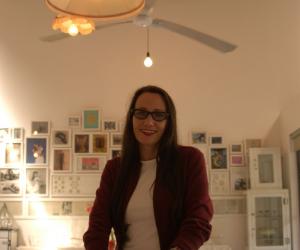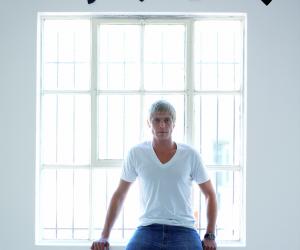First Published in
The word “sustainability” has been criticised for being such a catch-all phrase that it offers no concrete distinction. Yet, this multi-everything is precisely where the truth of sustainability lies: The days of the single grand gesture are over. We need to change the nature of everything we do if we are to survive in anything resembling our current environment. So, while it is true that a single act of sustainability might have close to zero impact, the power of change lies in the infinite layers of these sometimes incremental acts.
While science continues to search for singularity, the new reality that the world must embrace is plurality. It is this alternative pluralism that informs the inaugural Suss’t exhibition of sustainable design, which takes place at the KZNSA Gallery in Durban from November 16, 2008, to January 11, 2009.
In partnership with Design Indaba, the exhibition showcases the broad wealth of local sustainable design. Straddling the cultural and economic diversity inherent in South Africa and KwaZulu-Natal, the talents range from Amanda Laird Cherry, who works in her studio in Stamford Hill, to Thandi Mboyazi, who crafts her Zulu shoes from recycled car tyres on the pavement of Durban Station. Presenting work from as far afield as Cape Town are the likes of lighting designer Heath Nash, who has dramatically raised the stakes in terms of what can be done with plastic waste; furniture designer Haldane Martin, whose modular shelving system was designed as a sustainable job solution for disabled workers; and the Monkeybiz collective, that has redefined the parameters of cultural traditions and community involvement. A fashion boutique featuring local designers such as Black Coffee and the Holmes Brothers, and a collection of prints and books will also be on show.
Although the exhibition takes place during the festive season and everything is on sale, it is specifically not a Christmas show, with product selection being based on longevity and environmental integrity rather than the hyperglut of seasonable trends and disposable gifts that normally define festive giving. See, Suss’t not only seeks to attract a conscientious consumer, but would like to help to create a conscientious consumer.
Awareness of the plurality needed for conscientious consumption has been integral to the selection of products and designs. When first setting upon the task of selecting a body of work based on the principle of sustainability, the immediate knee-jerk response of Brenton Maart (the gallery’s curator and the engine behind the Suss’t project) and myself was to build a strong criterion-based model. However, in attempting to establish a series of tick boxes, we quickly realised that this approach would exclude many worthy concerns and result in a tiny exhibition.
In South Africa, where poverty is rife and so closely linked to the severe impact of the HIV/Aids pandemic, anything that creates employment without generating substantial negative externalities (there are virtually always some negative externalities) contributes substantially to creating a more sustainable social and economic system. For this reason we chose work from the Hillcrest Aids Centre, which has had a major impact on the ability of the local community to sustain itself, and the Zulu Beadwork Project in which a geographically disparate community of beaders and wire workers use an old Berea house as the conduit through which they sell their goods.
If a product has been made out of recycled materials, as in the case of the sweet-wrapper mats sold by Ncandi Shaya in Durban Station and Skermunkil’s delicately wrought jewellery recycled from old cutlery and crockery, that’s even better. It if it sold near to the place where it’s produced (as is the case of many of the goods sourced from the city’s streets), that’s also great. If it has been made in a community that uses solar power, well, that’s fantastic. And I’m not being facetious, just hopeful. It seems like exactly the kind of thing that the forward-looking community at Ardmore Ceramics might pioneer.
Still, sustainability is not enough. Beautiful design – both innovative and classical – remains an essential criterion in ensuring the longevity and ownership of a product. It is particularly satisfying when sustainability is perfectly and beautifully expressed in the production or function of the object itself, as in the case of Nash’s gorgeous and beautifully considered lights made from recycled materials (and fitted of course with low-energy bulbs). Or in the use of removed alien wood by design genius Richard Stretton in the work he produces for his company Koop. Not to mention the Soda project steered by SA Fashion Week, which has produced a sustainable model of collaboration between the country’s high-end fashion industry and skilled rural crafters.
In showcasing the best of local sustainable design, the exhibition functions as an illustration of how design is capable of saving us from ourselves. Sustainability has long carried the twin stigma of inferior quality and being overpriced relative to the market. Additionally, neoclassical economists have derided the many elements of sustainability as economically inefficient. But the very definition of efficiency is radically changing as its measure shifts from profit to units of carbon, methane and social stability. With that shift, everything changes. And with new technologies and innovative approaches to materials and design, sustainability has lost its stigma. In fact, it’s starting to sparkle and shine.
Regardless of the arguments from economists for a globalised trading system (although those who worship at the shrine of the market have been a little muted in recent months), there is one truth that I’m going to shout out. Local design and local production is inherently more sustainable than imported product, even without the threat of global warming. The irony is that, yes, of course we want to export it.
Suss’t, presented in collaboration with Design Indaba, runs from November 16, 2008, to January 11, 2009, at the KZNSA Gallery, 166 Bulwer Road, Durban. Website: www.kznsagallery.co.za. Tel: (031) 277 1703
About the KZNSA
Established in 1902 as a gallery in which to exhibit members’ work, the KZNSA is today KwaZulu-Natal’s leading gallery for contemporary visual culture. A not-for-profit, public benefit organisation committed to the promotion of contemporary arts, the KZNSA is helping to make art production in the province a more sustainable process. Additionally, the organisation, which has always been reliant on the largesse of funders, is itself attempting to move towards financial sustainability.
The building that houses the KZNSA is one of the few contemporary art spaces in South Africa specifically designed as such. Designed by architect Cindy Walters, it is an elegant example of contemporary South African architecture, created with sustainability in mind. No heating or cooling is required since the building is configured around natural airflow. Wooden louvers allow fresh air into the building; as the air heats up, it leaves through the whirligigs in the roof. Further, since half of the building is built into the earth, additional natural cooling is facilitated, helped by the fact that it is constructed from hollow block, which is a natural insulator. The building was also designed to optimise natural light by allowing a band of light to enter from the top edge of the building, thus minimising energy consumption. With a beautiful outside space, surrounded by greenery, its acknowledgement of local context and climate makes it one of KwaZulu-Natal’s most successful buildings.
The word “sustainability” has been criticised for being such a catch-all phrase that it offers no concrete distinction. Yet, this multi-everything is precisely where the truth of sustainability lies: The days of the single grand gesture are over. We need to change the nature of everything we do if we are to survive in anything resembling our current environment. So, while it is true that a single act of sustainability might have close to zero impact, the power of change lies in the infinite layers of these sometimes incremental acts.
While science continues to search for singularity, the new reality that the world must embrace is plurality. It is this alternative pluralism that informs the inaugural Suss’t exhibition of sustainable design, which takes place at the KZNSA Gallery in Durban from November 16, 2008, to January 11, 2009.
In partnership with Design Indaba, the exhibition showcases the broad wealth of local sustainable design. Straddling the cultural and economic diversity inherent in South Africa and KwaZulu-Natal, the talents range from Amanda Laird Cherry, who works in her studio in Stamford Hill, to Thandi Mboyazi, who crafts her Zulu shoes from recycled car tyres on the pavement of Durban Station. Presenting work from as far afield as Cape Town are the likes of lighting designer Heath Nash, who has dramatically raised the stakes in terms of what can be done with plastic waste; furniture designer Haldane Martin, whose modular shelving system was designed as a sustainable job solution for disabled workers; and the Monkeybiz collective, that has redefined the parameters of cultural traditions and community involvement. A fashion boutique featuring local designers such as Black Coffee and the Holmes Brothers, and a collection of prints and books will also be on show.
Although the exhibition takes place during the festive season and everything is on sale, it is specifically not a Christmas show, with product selection being based on longevity and environmental integrity rather than the hyperglut of seasonable trends and disposable gifts that normally define festive giving. See, Suss’t not only seeks to attract a conscientious consumer, but would like to help to create a conscientious consumer.
Awareness of the plurality needed for conscientious consumption has been integral to the selection of products and designs. When first setting upon the task of selecting a body of work based on the principle of sustainability, the immediate knee-jerk response of Brenton Maart (the gallery’s curator and the engine behind the Suss’t project) and myself was to build a strong criterion-based model. However, in attempting to establish a series of tick boxes, we quickly realised that this approach would exclude many worthy concerns and result in a tiny exhibition.
In South Africa, where poverty is rife and so closely linked to the severe impact of the HIV/Aids pandemic, anything that creates employment without generating substantial negative externalities (there are virtually always some negative externalities) contributes substantially to creating a more sustainable social and economic system. For this reason we chose work from the Hillcrest Aids Centre, which has had a major impact on the ability of the local community to sustain itself, and the Zulu Beadwork Project in which a geographically disparate community of beaders and wire workers use an old Berea house as the conduit through which they sell their goods.
If a product has been made out of recycled materials, as in the case of the sweet-wrapper mats sold by Ncandi Shaya in Durban Station and Skermunkil’s delicately wrought jewellery recycled from old cutlery and crockery, that’s even better. It if it sold near to the place where it’s produced (as is the case of many of the goods sourced from the city’s streets), that’s also great. If it has been made in a community that uses solar power, well, that’s fantastic. And I’m not being facetious, just hopeful. It seems like exactly the kind of thing that the forward-looking community at Ardmore Ceramics might pioneer.
Still, sustainability is not enough. Beautiful design – both innovative and classical – remains an essential criterion in ensuring the longevity and ownership of a product. It is particularly satisfying when sustainability is perfectly and beautifully expressed in the production or function of the object itself, as in the case of Nash’s gorgeous and beautifully considered lights made from recycled materials (and fitted of course with low-energy bulbs). Or in the use of removed alien wood by design genius Richard Stretton in the work he produces for his company Koop. Not to mention the Soda project steered by SA Fashion Week, which has produced a sustainable model of collaboration between the country’s high-end fashion industry and skilled rural crafters.
In showcasing the best of local sustainable design, the exhibition functions as an illustration of how design is capable of saving us from ourselves. Sustainability has long carried the twin stigma of inferior quality and being overpriced relative to the market. Additionally, neoclassical economists have derided the many elements of sustainability as economically inefficient. But the very definition of efficiency is radically changing as its measure shifts from profit to units of carbon, methane and social stability. With that shift, everything changes. And with new technologies and innovative approaches to materials and design, sustainability has lost its stigma. In fact, it’s starting to sparkle and shine.
Regardless of the arguments from economists for a globalised trading system (although those who worship at the shrine of the market have been a little muted in recent months), there is one truth that I’m going to shout out. Local design and local production is inherently more sustainable than imported product, even without the threat of global warming. The irony is that, yes, of course we want to export it.
Suss’t, presented in collaboration with Design Indaba, runs from November 16, 2008, to January 11, 2009, at the KZNSA Gallery, 166 Bulwer Road, Durban. Website: www.kznsagallery.co.za. Tel: (031) 277 1703
About the KZNSA
Established in 1902 as a gallery in which to exhibit members’ work, the KZNSA is today KwaZulu-Natal’s leading gallery for contemporary visual culture. A not-for-profit, public benefit organisation committed to the promotion of contemporary arts, the KZNSA is helping to make art production in the province a more sustainable process. Additionally, the organisation, which has always been reliant on the largesse of funders, is itself attempting to move towards financial sustainability.
The building that houses the KZNSA is one of the few contemporary art spaces in South Africa specifically designed as such. Designed by architect Cindy Walters, it is an elegant example of contemporary South African architecture, created with sustainability in mind. No heating or cooling is required since the building is configured around natural airflow. Wooden louvers allow fresh air into the building; as the air heats up, it leaves through the whirligigs in the roof. Further, since half of the building is built into the earth, additional natural cooling is facilitated, helped by the fact that it is constructed from hollow block, which is a natural insulator. The building was also designed to optimise natural light by allowing a band of light to enter from the top edge of the building, thus minimising energy consumption. With a beautiful outside space, surrounded by greenery, its acknowledgement of local context and climate makes it one of KwaZulu-Natal’s most successful buildings.























